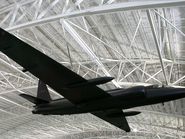Nuremberg Trials Tourist attraction in Nürnberg, Germany
Upon discovery of the Nazi concentration camps, Dwight Eisenhower ordered camera crews to document evidence of the atrocities in them for use in the Nuremberg Trials. He reclassified German prisoners of war (POWs) in U.S. custody as Disarmed Enemy Forces (DEFs), who were no longer subject to the Geneva Convention.
Source: Wikipedia
Germany surrendered unconditionally on 8 May 1945. Rudolf Hess, facing charges as a war criminal, was ordered to appear before the International Military Tribunal and was transported to Nuremberg on 10 October 1945.
Source: Wikipedia
Gerd von Rundstedt testified at the Nuremberg Trials in 1946: "We generals did not concern ourselves with politics. We did not take part in any political discussions, and we did not hold any political discussions among ourselves."
Source: Wikipedia
Adolf Eichmann was found guilty of membership in three organisations that had been declared criminal at the Nuremberg trials.
Source: Wikipedia
Starting in August 1950, Konrad Adenauer began to pressure the Western Allies to free all of the war criminals in their custody, especially those from the Wehrmacht, whose continued imprisonment he claimed made West German rearmament impossible. Adenauer had been opposed to the Nuremberg Trials in 1945–46, and after becoming Chancellor, he demanded the release of the so-called "Spandau Seven," as the seven war criminals convicted at Nuremberg and imprisoned at Spandau Prison were known.
Source: Wikipedia
